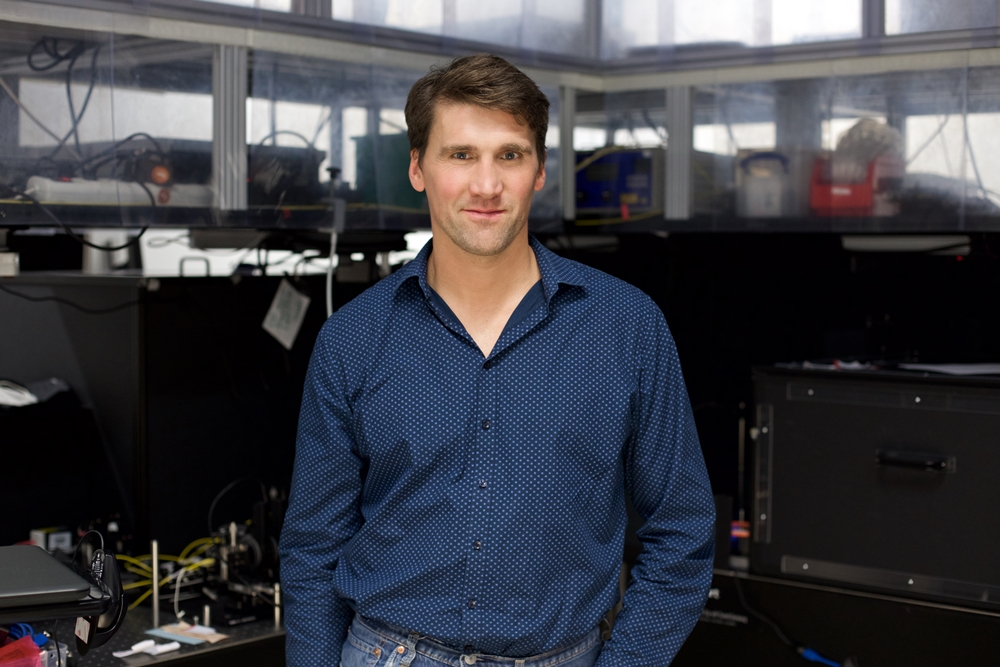Within the BioQantSense Twinning project, researchers from the Institute of Physics Belgrade are developing a new multidisciplinary scientific field, quantum biophotonics. The projects is being realized in cooperation and partnership with two leading European research institutions, the Friedrich Schiller University in Jena and the Italian National Research Council (CNR), and with the Faculty of Biology, University of Belgrade as one of the project partners. While developing scientific excellence, one of the project goals is the establishment of a modern center for quantum biophotonics at the Institute of Physics Belgrade. We spoke to Dr Christian Helgert, Director and Scientific Manager of the Abbe Center for Photonics of the Friedrich Schiller University in Jena, about the project results so far, cooperation and future plans.

You are the Chief Executive Officer and Scientific Manager at the Abbe Center of Photonics, with a background in optics and photonics, particularly in nanooptics and nanostructure technology. What are your impressions and experiences working with IPB PC?
I have known IPB PC for quite some time. My connection with them dates back to 2008, when I was a young PhD student. We collaborated as part of a European consortium that was researching nanostructured optical surfaces with extraordinary properties enabled by graphene. At that time, this was an innovative and highly relevant topic. I had the privilege of leading the Jena side of the consortium. Since then, various research groups from the Abbe Center of Photonics have been continuously involved in joint research and exchange programs with IPB PC. Over the years, my colleagues and I have frequently visited IPB PC, and vice versa, contributing to numerous projects and co-authoring many joint publications. Our partnership with IPB PC is both long-standing and highly productive, and our latest collaboration, the BioQantSense project, is an exciting new chapter in our scientific journey together.
Where do you see the role of FSU and the Abbe Center of Photonics in implementing the BioQantSense project?
Throughout the project, I have had the opportunity to meet many dedicated PhD students from Belgrade. They are often the driving force behind research projects, as they are deeply involved in the hands-on lab work. IPB PC, with its strong foundation and state-of-the-art equipment, particularly in nonlinear optics, is now stepping into new territory by building its own quantum microscopy setup. We are thrilled to be a partner in the BioQuantSense project, contributing our expertise and insights gained from our research in this field. I am confident that with the commitment of IPB PC and its outstanding PhD students, we will achieve our objectives and demonstrate quantum microscopy of biological samples for the first time in Serbia.
In your opinion, what will be the main impact of the project on IPB PC’s organizational structure, management, and administrative capacities?
Having observed many scientific institutions and facilities across Europe and beyond, I believe that broadening one’s perspective and being open to learning from different scientific cultures is invaluable. This is also true for the management and organizational aspects of both our institutions. The BioQantSense project offers an excellent opportunity for mutual learning. A significant outcome of the project would be if IPB could establish and sustainably support a new Center for Quantum Biophotonics within its existing structures. This would position IPB as a competitive player in upcoming European calls for advanced research in quantum photonics and technology.
Why is the establishment of a Center for Quantum Biophotonics important for IPB’s competitive edge, and what opportunities will it unlock?
We are in the midst of the second quantum revolution, with new applications emerging rapidly, leveraging quantum phenomena like superposition and entanglement. Quantum computers are already handling basic tasks, and the economic potential in this area is immense, driving global competition among technology platforms. To keep pace, there is a need for dynamic progress, not only in scientific research but also within industrial sectors. It’s crucial for all stakeholders to recognize the significance of quantum technologies for their future. Establishing a Center for Quantum Biophotonics would enable IPB PC to contribute significantly to this field on both national and European levels.
What are your thoughts on the collaboration with the project team and colleagues from the Institute?
I thoroughly enjoy our collaboration. I particularly hope that the early-career scientists and PhD students involved can build lasting scientific and personal connections that will benefit them throughout their careers.
Based on your experience and cooperation with IPB PC, how do you envision future collaboration with the Institute in terms of EU project realization?
At the Abbe Center of Photonics in Jena, we are committed to advancing our research in quantum imaging, quantum sensing, quantum communication, and quantum computing. We are also developing new research infrastructures and have recently established a Master’s program to train the next generation of scientists in these fields. Our strong background in biophotonics and its applications makes us an ideal partner. If a Center for Quantum Biophotonics were to be established in Belgrade, it would be a perfect fit for future collaborations.




